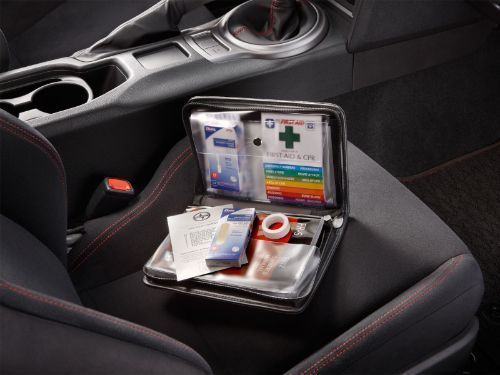A new buzzword in the technical publishing world. New word? Not exactly new, but surely it’s a new word in the Indian Defense Technical Publishing segment. S1000D is an Interactive Electronic Technical Publishing IETP. It’s also called IETM too.



What is S1000D?S1000D is the European standard of technical publications or technical documentation being followed in Aerospace since 1980, which uses CSDB, a Common source database which is used for preparing, managing, and publishing technical information for a warship, or Aerospace, or even Civil airlines too.The first release of the S1000D Specification was in 1989 and in August 2019 the latest 5 Issue was release An airplane or ship is built with thousands of components, sub-components and navigation equipment, and many more.
OEMs make the documents to their own standards.
Each document and format is entirely different because all OEMs don’t maintain similar standards.
At that point, the Technical Publications Specification Maintenance Group (TPSMG) was formed.
They proposed a DM-based (Data Module) Based structure.
TO manage these Data modules CSDB was maintained.

It’s also called IETM too.S1000d is not new but very few Indian companies, which support documentation of foreign Airline documentation are similar to S1000d word.
After converting to XML, they send to foreign airlines company, where they foreign airline companies plug-in theses XML into their S1000d suits.What is S1000DS1000D is the European standard of technical publications or technical documentation being followed in Aerospace since 1980, which uses CSDB, a Common source database which is used for preparing, managing, and publishing technical information for a warship, or Aerospace, or even Civil airlines too.The first release of the S1000D Specification was in 1989 and in August 2019 the latest 5 Issue was releaseAn airplane or ship is built with thousands of components, subcomponents and navigation equipment, and many more.
Each document and format is entirely different because all OEMs don’t maintain similar standards.
For example, let’s assume that one data module is prepared on Operation of GPS and stored in CSDB, then whenever GPS operations are to be reproduced for different aircraft or different systems, simply that Data module can be copied and plugged.In short, reusability and the format used is XML, and tags are defined by the S1000D steering committee.S1000D History in BriefA few years back S1000d is mainly used in the Aerospace segment, because S1000d is basically governed by Steering Committee formed by ASD, Aerospace Industries Association of America (AIA) ATA e-Business Program These organizations form the S1000D CouncilHence, it’s more apt for the Aerospace industry.Currently, Defense systems — including land, sea, and air products, civil aviation, Ship industry of the US have adopted these standards while making documentation.Now Indian Defense system is also trying to adopt S1000D for their documentation activities.When Navy/IAF/Army wants s1000d IETM, it is implied that the navy has CSDB Suit /Local CSDB Server20- 50 OEMs or Service providers will give S1000d data Modules of various systems and the Navy CSDB Local server will host them and monitor them and does the user managementIf the navy does not have a CSDB suit then, still they can run IETM, but a standalone version where no user management will be done by IETM Viewer.
It’s very apt for the systems which have around 1 lakh pages of documentation and the project has just initiated the documentation.Benefits of S1000DReusability of data hence reduces production costStandardization of data and naming conventionsStandardization of data and naming conventionsGood for legacy data conversionProper documentation and version control managementZero printing cost and zero occupancies of space as no Hard copies are to be maintained.
It depends on how big is your System/equipment.S1000d mostly suits to airline industry where every part has a unique number may it be AIRBUS, BOEING BUSINESS JETS, BOMBARDIER AEROSPACE, CESSNA AIRCRAFT.

What is S1000D?S1000D is the European standard of technical publications or technical documentation being followed in Aerospace since 1980, which uses CSDB, a Common source database which is used for preparing, managing, and publishing technical information for a warship, or Aerospace, or even Civil airlines too.
The first release of the S1000D Specification was in 1989 and in August 2019 the latest 5 Issue was release An airplane or ship is built with thousands of components, sub-components and navigation equipment, and many more.
OEMs make the documents to their own standards.
Each document and format is entirely different because all OEMs don’t maintain similar standards.
At that point, the Technical Publications Specification Maintenance Group (TPSMG) was formed.
They proposed a DM-based (Data Module) Based structure.

What is S1000D?S1000D is the European standard of technical publications or technical documentation being followed in Aerospace since 1980, which uses CSDB, a Common source database which is used for preparing, managing, and publishing technical information for a warship, or Aerospace, or even Civil airlines too.The first release of the S1000D Specification was in 1989 and in August 2019 the latest 5 Issue was release An airplane or ship is built with thousands of components, sub-components and navigation equipment, and many more.
OEMs make the documents to their own standards.
Each document and format is entirely different because all OEMs don’t maintain similar standards.
At that point, the Technical Publications Specification Maintenance Group (TPSMG) was formed.
They proposed a DM-based (Data Module) Based structure.
TO manage these Data modules CSDB was maintained.

Code and Pixels is an IETM level 4 and S1000D development company delivered 25 projects.
Interactive Electronic Technical Manual (IETM) range from Level 3 , 4 and 5. https://www.codeandpixels.net/interactive-electronic-technical-manual-services-levels
























